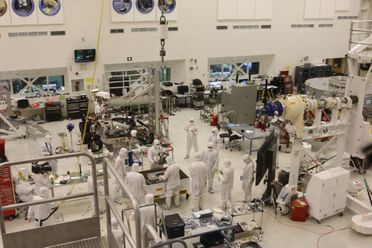Start working aT Netflix | Apply Now
Have work at Netflix| Join Us
Make money from Netflix JOB | Start Now
In order to do a lean waste walk guide template, you’ll first need to understand the basics of what a waste walk is and how it can be used in order to improve your company’s operations. A waste walk is simply defined as going around your workplace and looking for anything that could be considered wasted time, energy, or resources. This could include anything from obvious things like unused materials or equipment, to more subtle things like inefficient processes or workflows.
By identifying these wastes, you can then begin to implement changes that will help eliminate them and improve your company’s overall efficiency.
Click Here to Start a Career at Netflix
- Assign someone to be the waste walk guide and provide them with a copy of the lean waste walk guide template
- The guide will then brief the team on what a waste walk is and why it is important
- The guide will then lead the team through the facility, pointing out areas of potential waste and explaining how they can be improved
- After the tour, the team will debrief and discuss ways to improve the identified areas of waste
Lean Thinking Tutorial – Chapter 5: Lean thinking waste walk sheet
How Do You Conduct a Waste Walk?
If you’re looking to get a better handle on the waste in your facility, a waste walk is a great place to start. Here’s a step-by-step guide to conducting your own waste walk. 1. Gather Your Team
You’ll want to involve as many people as possible in your waste walk, so gather up a team of employees from all different departments. If you can, try to include representatives from each shift. 2. Choose a Starting Point
Start by choosing an area of your facility that’s easy to access and observe. This will be the starting point for your walk. 3. Walk and Observe
As you walk through the facility, take note of anything that could be considered waste. This includes things like unused materials, damaged products, or anything else that isn’t being used in an efficient way. Be sure to involve everyone on your team in this process so you can get as many perspectives as possible.
4. Identify Opportunities for Improvement Once you’ve completed your walk, sit down with your team and discuss what you observed. See if there are any patterns or common themes among the items you identified as waste.
From there, brainstorm ways that these issues could be improved upon or eliminated altogether. 5 Implement Solutions Armed with ideas for improvement, it’s time to implement some changes!
Work with your team to come up with a plan for addressing the issues you’ve identified.
What is the Purpose of the Waste Walk Template?
A waste walk is a simple tool that can be used to help identify and reduce waste in any process. The purpose of the waste walk template is to provide a structured approach for conducting a waste walk, and to ensure that all relevant information is captured.
What are the 7 Wastes of Gemba?
The seven wastes of Gemba are overproduction, inventory, motion, waiting, defects, transport, and non-utilized talent. Overproduction: Producing more than is needed or wanted. This creates extra work in the form of rework or sorting through excess product.
It also ties up resources that could be used elsewhere and results in increased inventory levels. Inventory: Excess inventory can tie up cash flow and lead to obsolescence. It can also be difficult to keep track of and manage large quantities of stock.
Motion: Unnecessary movement or travel by either people or products. This can add time and cost to processes without adding value. Waiting: Time spent waiting for materials, information, approvals, etc.
This can lead to frustration and boredom for employees as well as delays in completing work. Defects: Defective products or incorrect information waste time and money when they need to be corrected or replaced. They can also cause customer dissatisfaction.
Transportation: Moving materials between locations adds cost and time but may not add value if the material is not being used immediately at the new location.
What are the 7 Waste Areas in the Lean Concept?
The 7 Waste areas in the Lean concept are: Overproduction, Waiting, Transportation, Processing itself, Inventory, Motion and Defects. 1. Overproduction – Creating more product than is necessary or required at the current time. This can lead to excessive inventory and storage costs, as well as increased production costs due to the need to create more product than necessary.
2. Waiting – Time spent waiting for materials, information or equipment can lead to delays in production and ultimately result in lost sales or opportunities. 3. Transportation – Moving materials or products around unnecessarily can add significant cost to the overall production process. streamlining transportation processes can lead to significant efficiency gains.
4. Processing Itself – Unnecessary or excessive processing steps can add unnecessary cost and complexity to the manufacturing process. Identifying and eliminating these steps can result in considerable efficiency gains 5 Inventory – Excessive levels of inventory can tie up working capital and lead to higher storage costs. Reducing inventory levels through just-in-time manufacturing techniques can free up valuable resources 6 .
Motion – Excessive movement of people or equipment during the manufacturing process can lead to wasted time and effort . Optimizing the layout of work stations and improving material handling procedures can reduce wasteful motion 7 . Defects – Scrap , Rework ,and Repair resulting from defects represent a significant waste of time , money ,and resources .
Click Here to Start a Career at Netflix

Credit: leansmarts.com
Waste Walk Template Excel
If your Excel skills are a bit rusty, or you simply don’t have time to create a Waste Walk template from scratch, never fear! There are plenty of great templates out there that you can download and use for free. A quick Google search will turn up tons of results, but we’ve compiled a few of our favorites here.
This first template comes from Vertex42, and it’s a great all-purpose tool that can be used for any type of waste walk. It’s highly customizable, so you can add or remove columns as needed to suit your particular needs. This next template is specifically designed for food waste walks.
It comes from the Natural Resources Defense Council (NRDC), and it includes detailed instructions on how to conduct a waste walk as well as space to record your findings. If you’re interested in reducing food waste in your facility, this is a great option to consider. Finally, this last template is from LeanPath, and it’s geared towards restaurants and other food service businesses.
It includes sections for recording data on pre-consumer waste (like scraps generated during food prep) and post-consumer waste (like uneaten food left on plates). If you’re looking for a comprehensive solution for tracking food waste in your business, this is it!
Waste Walk – Lean Six Sigma
If you’re looking to get Lean Six Sigma certified, one of the first things you’ll need to do is complete a Waste Walk. This process helps identify areas of waste in your organization so that you can start working on eliminating them. The Waste Walk is typically led by a Green Belt or Black Belt, and it involves walking through your workplace and observing how work is being done.
During the walk, you’ll be looking for any wasted time, materials, or energy. Once the walk is completed, you’ll debrief with your team and discuss ways to eliminate the waste you observed. If you’re not sure where to start with your Waste Walk, lean on your certification training provider for guidance.
They should be able to give you tips and tricks for identifying waste in your organization.
Waste Walk Meaning
A waste walk is when you literally walk around your facility to identify sources of waste. It’s a simple but effective way to engage employees in Lean thinking and help them understand how their work affects the bottom line. The benefits of a waste walk are many.
For one, it gets everyone on the same page about what Lean is and why it’s important. It also helps to break down barriers between departments and get everyone working together towards a common goal. Finally, it can help to identify potential cost savings that can be achieved through process improvements.
If you’re thinking about conducting a waste walk at your facility, there are a few things to keep in mind. First, make sure you have a clear purpose for doing the walk – is it to identify specific types of waste or simply to raise awareness? Second, choose a route that will allow you to cover as much ground as possible without taking too much time.
And finally, be prepared to ask lots of questions! The more engaged your employees are, the more successful your waste walk will be.
Click Here to Start a Career at Netflix
Conclusion
In order to do a waste walk, you need to first understand what wastes are. These are classified as anything that doesn’t add value to the customer, and can include things like excessive motion, waiting time, overproduction, and more. Once you know what to look for, you can begin your waste walk by following these steps:
1. Define the scope of your walk. This includes figuring out where you’ll be walking and who will be participating. 2. Create a guide template.
This will help ensure that everyone is on the same page and knows what to look for during the walk. 3. Gather data during the walk. This includes taking note of any wastes you see and documenting them accordingly.
4. Analyze the data collected. This step allows you to identify patterns and trends in the data so that you can better address them moving forward.




